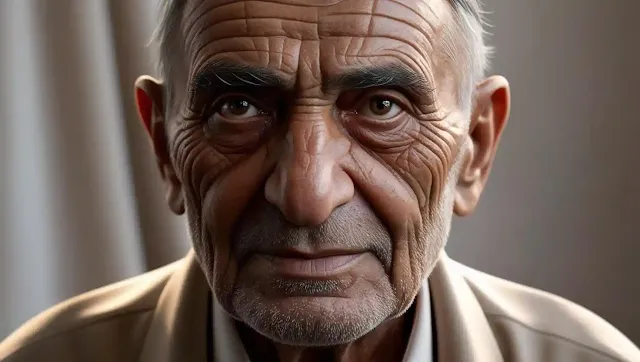Ad Code
IQ TEST
Menu Footer Widget
Contact form
ads
We can't seem to find the page you are looking for, we'll fix that soon but for now you can return to the home page
Popular Posts
How to Become a Certified Scrum Master in 30 Days
Python Mastery: A 30-Day Roadmap to Becoming a Pro
The Nonverbal Communication Handbook: How to Read Body Language and Communicate Effectively
Introduction: Unlocking the Secrets of Nonverbal Communication
In a world dominated by words, the true essence of communication often lies in the silent messages we send. How do we convey our deepest emotions, desires, and intentions without speaking a single word? Welcome to the fascinating realm of nonverbal communication—where gestures, facial expressions, posture, and even the space between us tell stories far more vivid than any sentence could.
Chapter 1: The Birth of Nonverbal Communication - A Historical and Cultural Perspective
Nonverbal communication is as old as humanity itself. Long before the written word or spoken language, humans relied on physical gestures, facial expressions, and body movements to express thoughts and emotions. In fact, some of the earliest forms of human interaction were entirely nonverbal. Think about the way a mother comforts her baby with a touch or how a warrior uses posture to convey strength without uttering a sound.
Anthropologist Charles Darwin was among the first to study the importance of nonverbal communication in human interaction. In his book The Expression of the Emotions in Man and Animals (1872), Darwin explored how emotions, through expressions like smiles and frowns, are universal across cultures. His work suggested that nonverbal signals were not merely learned behaviors but inherent aspects of our evolutionary development.
Chapter 2: The Anatomy of Body Language - Breaking Down the Key Signals
The human body is a sophisticated communicator. Every gesture, movement, and expression carries meaning, whether we're aware of it or not. But how do we begin to understand this vast language of the body?
At its core, body language is divided into several key components: facial expressions, gestures, posture, eye contact, and proxemics (the use of space). Each of these elements contributes to the larger message we send to the world. Let’s break them down:
-
Facial Expressions: Our face is one of the most powerful tools in nonverbal communication. Expressions such as a smile, frown, or raised eyebrow can convey happiness, sadness, confusion, or surprise in an instant.
-
Gestures: Whether it's a wave, a thumbs-up, or a clenched fist, our hands are constantly moving to reinforce or contradict what we say.
-
Posture: Our posture communicates a lot about our confidence, openness, or defensiveness.
-
Eye Contact: Eye contact is a powerful nonverbal tool. The intensity and duration of eye contact can signal a variety of emotions.
-
Proxemics: The physical space we maintain between ourselves and others is also a form of communication.
Chapter 3: The Science of Nonverbal Communication - What the Research Tells Us
Understanding the nuances of body language is not just about observation; it’s also about science. Numerous studies have demonstrated the profound impact nonverbal communication has on human interactions, affecting everything from personal relationships to business negotiations.
One groundbreaking study by psychologist Albert Mehrabian in the 1970s revealed that communication is made up of three components: 7% words, 38% tone of voice, and 55% body language. This finding highlighted the overwhelming importance of nonverbal cues in how we understand one another. According to Mehrabian’s research, the meaning of a message is largely determined by how it is delivered, not just what is said.
Chapter 4: Decoding Body Language in Different Contexts
Nonverbal communication takes on different meanings depending on the context. A gesture that signifies approval in one situation may signal something entirely different in another. Context is key to interpreting body language correctly.
For example, consider a business meeting. A firm handshake can be a sign of confidence and professionalism, while avoiding a handshake might be interpreted as a lack of interest or disrespect. However, in a more casual or informal setting, such as meeting a friend, the same handshake could be seen as overly formal or awkward.
Chapter 5: Mastering Nonverbal Communication - Practical Strategies and Techniques
Now that we have explored the theory and science of nonverbal communication, it’s time to put these insights into practice. How can we refine our own body language to become more effective communicators?
First, it’s important to develop self-awareness. Pay attention to how your body language might be perceived by others. Are you crossing your arms defensively during a conversation? Are you avoiding eye contact out of nervousness or disinterest?
Another strategy is to learn the art of mirroring. By subtly mimicking the body language of others, you can build rapport and establish trust.
Conclusion: The Power of Silence in Communication
As we’ve explored throughout this handbook, nonverbal communication is an essential and powerful tool that shapes every aspect of our interactions. By understanding the science, history, and context of body language, we gain the ability to communicate more effectively, whether in personal relationships or professional endeavors. Mastering this skill opens doors to deeper connections and greater influence.
Internal Links to Related Content:
-
Learn to Learn anything in 15 minutes : Unlocking Your Brain’s Full Potential
-
Optimal Protocols for Studying & Learning A Comprehensive Guide to Maximizing Efficiency and Retention
-
How to Learn Faster and Retain More Information: Mastering the Art of Memory and Efficient Learning
External Links to Trustworthy Sources:





Social Plugin